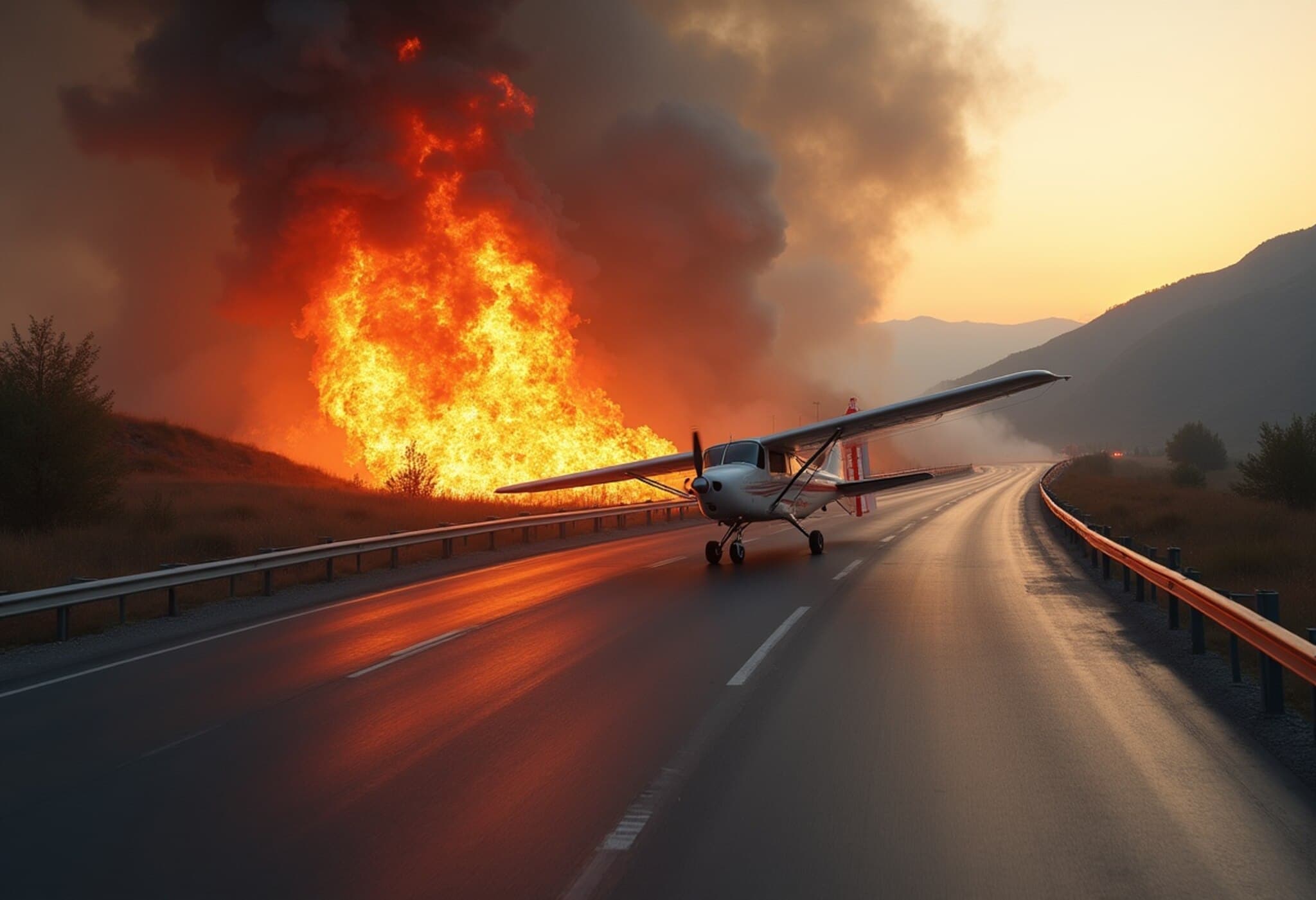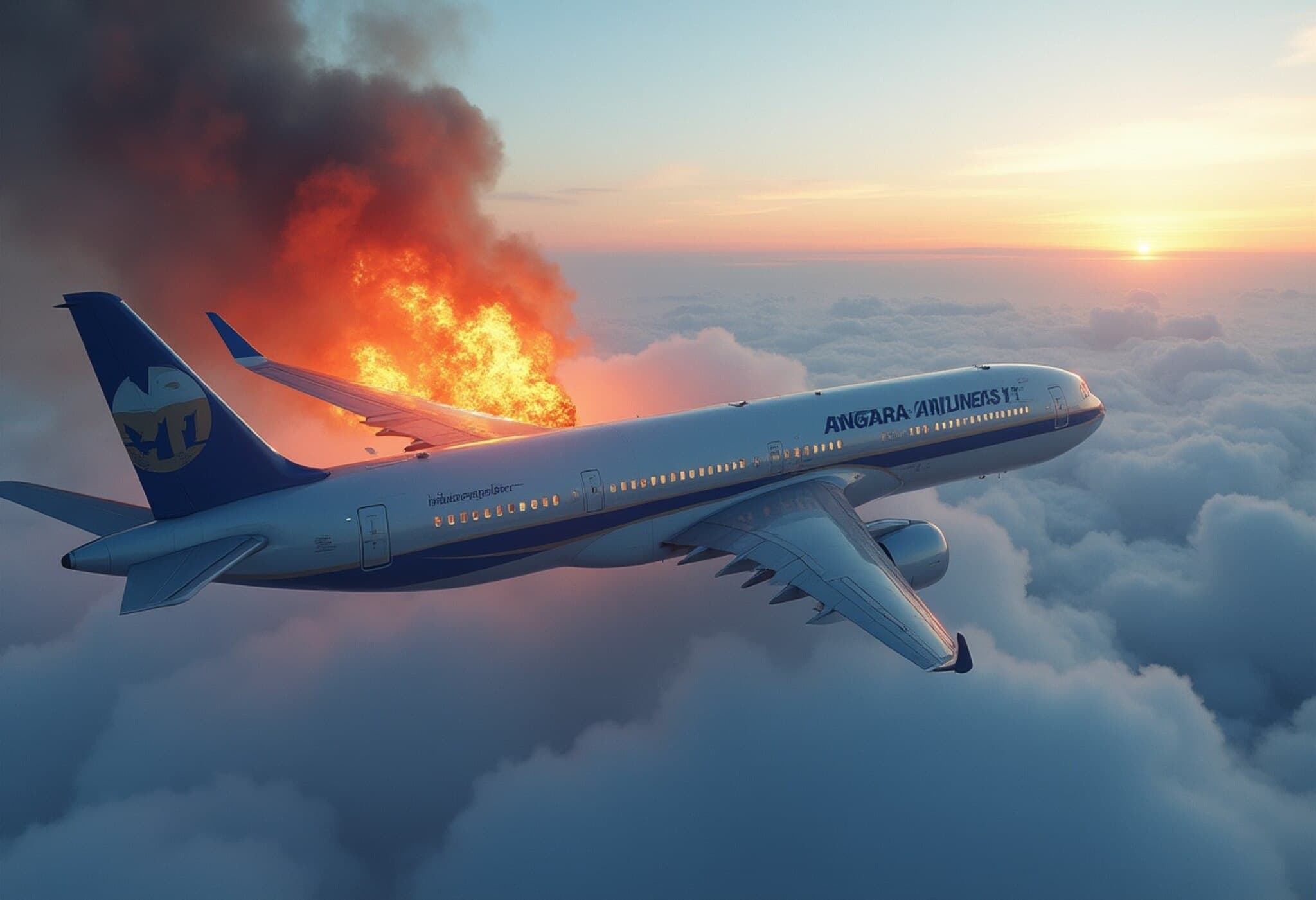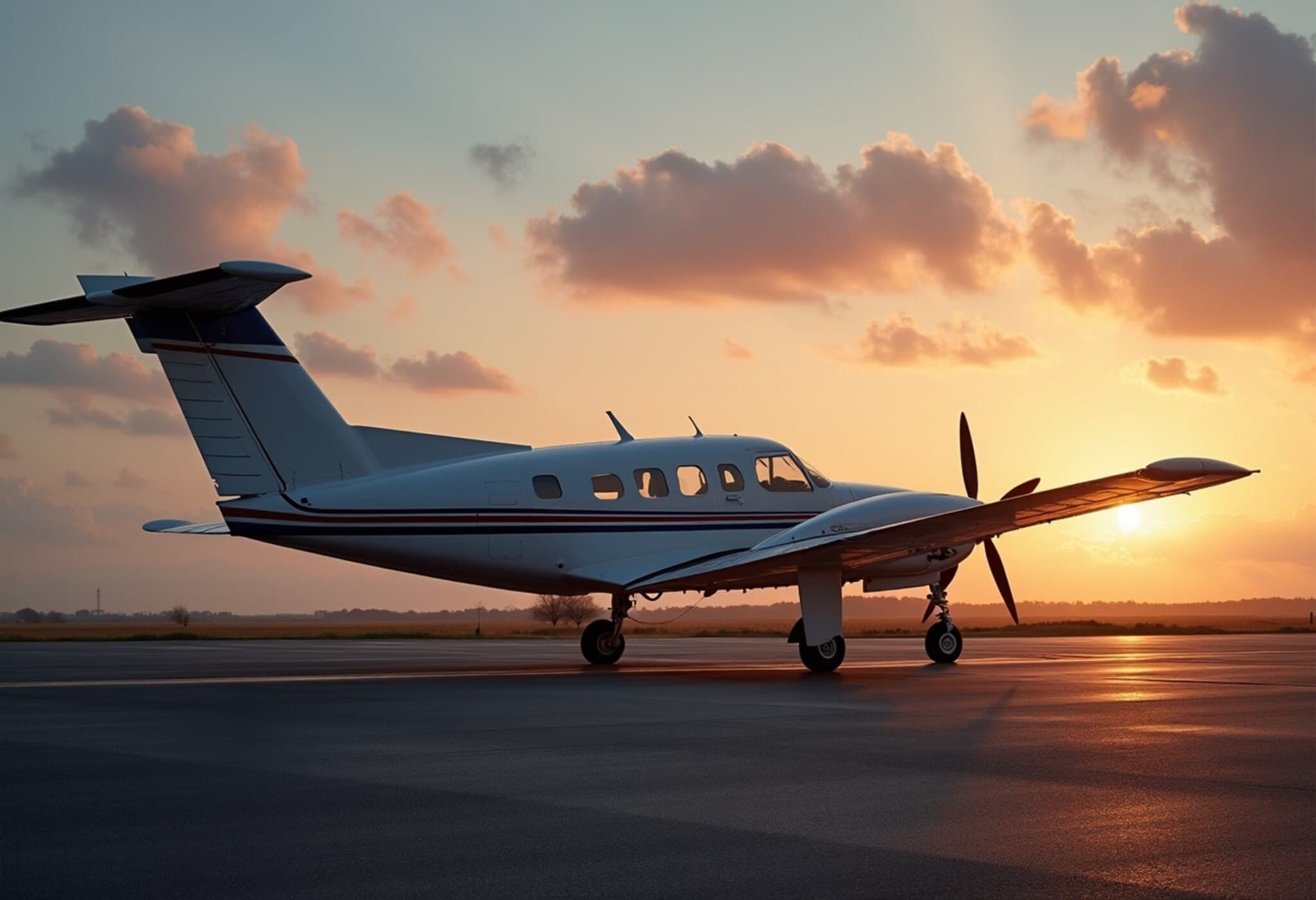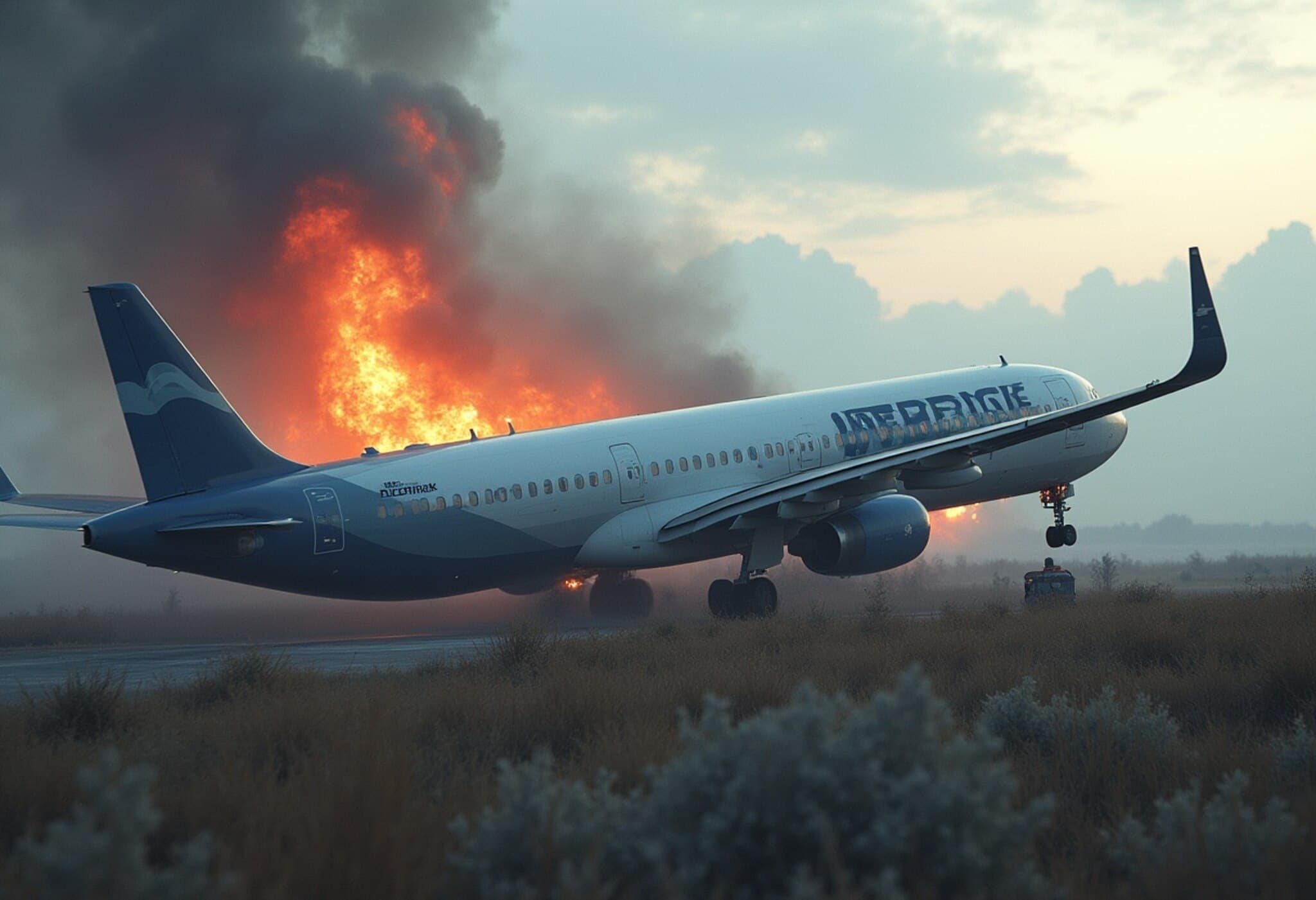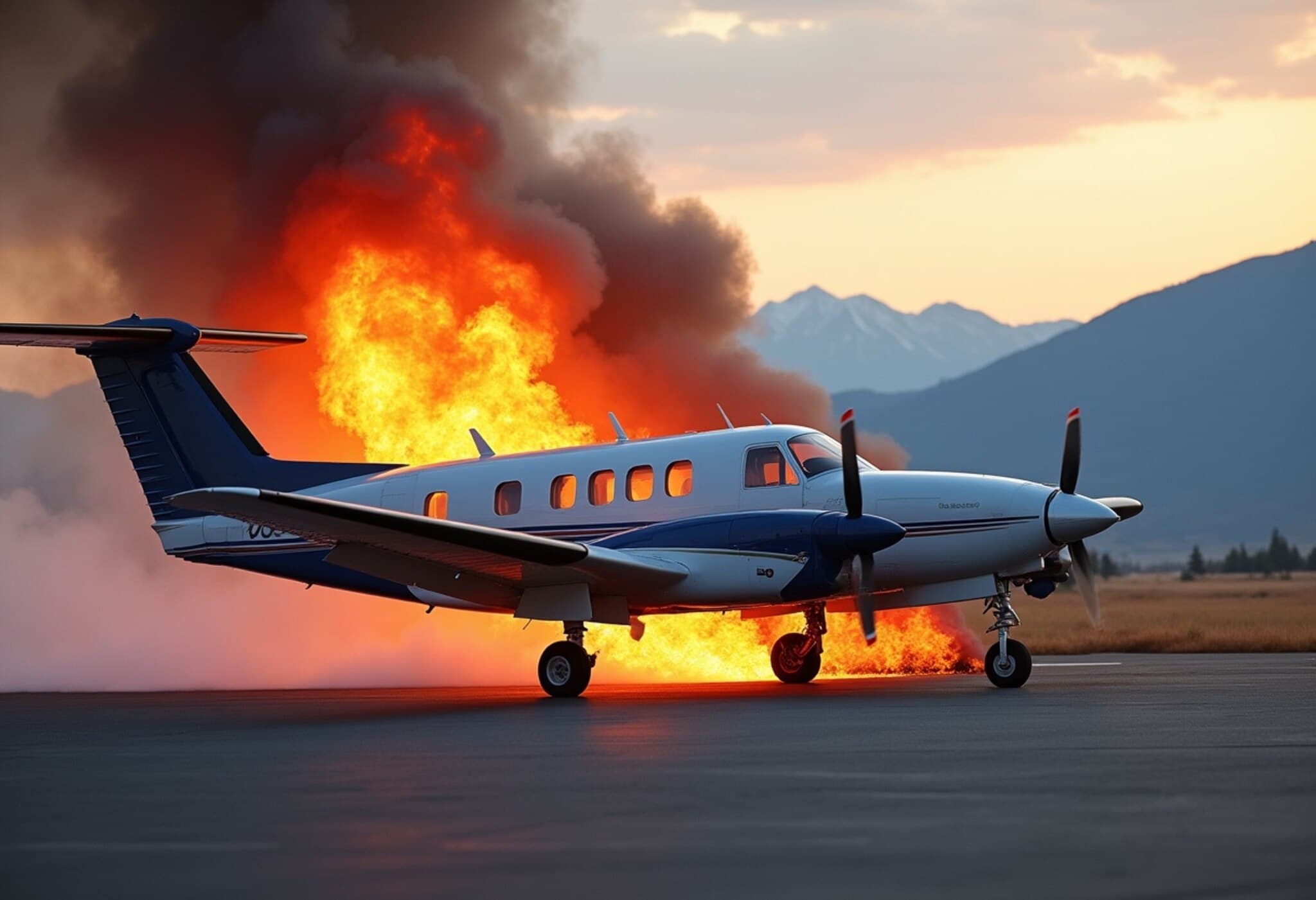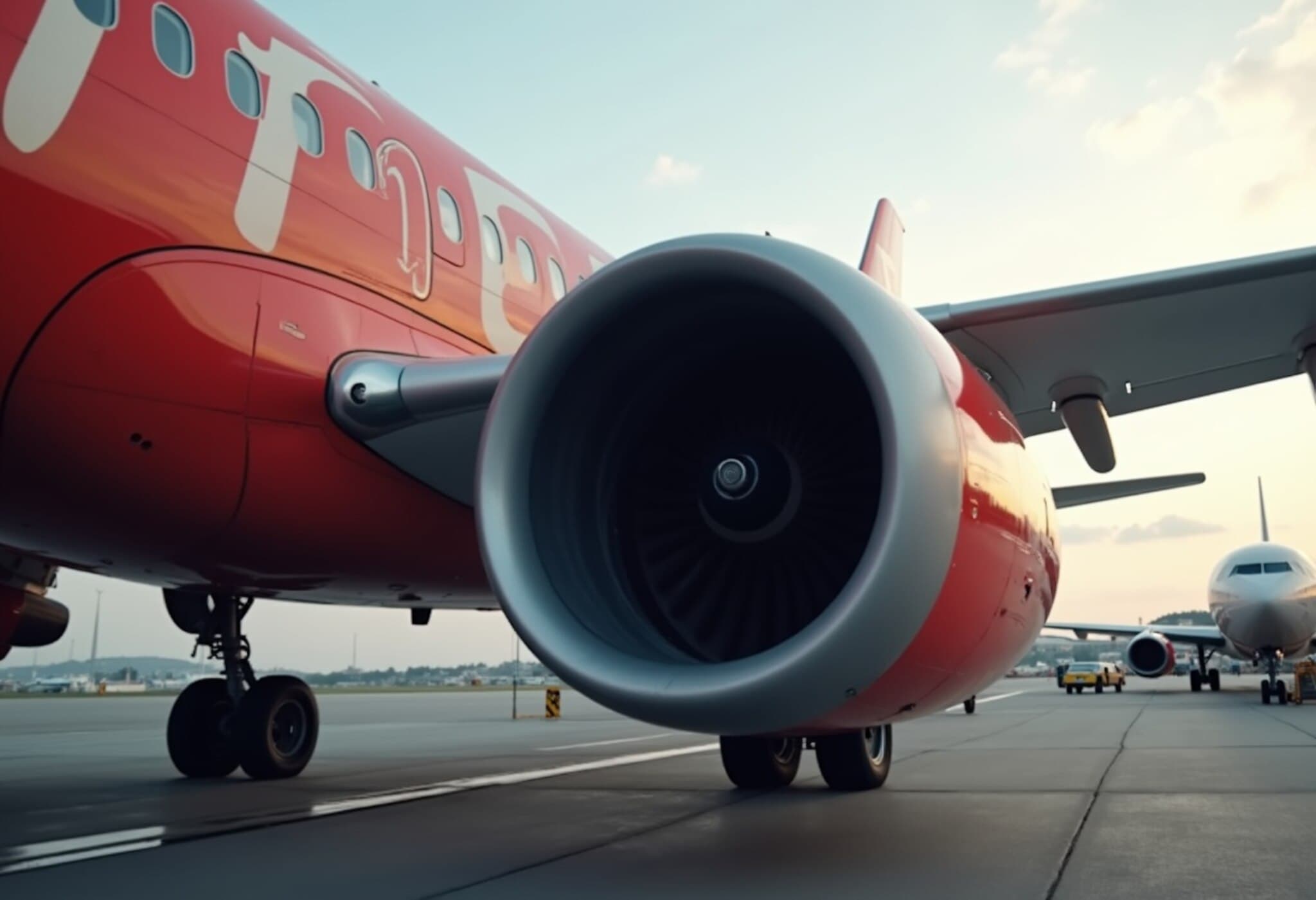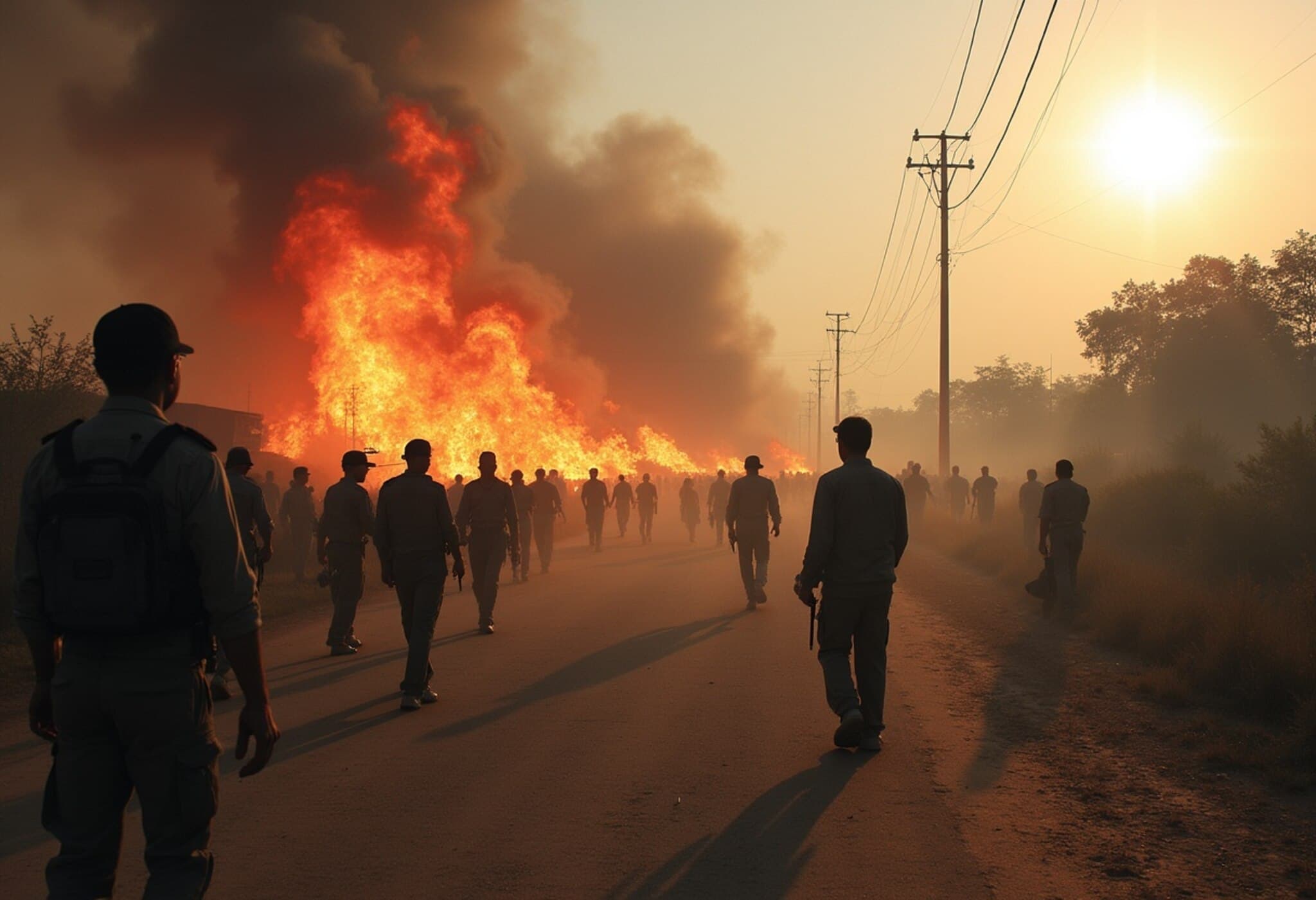Tragic Ultralight Plane Crash on Italian Highway Claims Two Lives
In a harrowing incident that unfolded over the skies of Brescia, Italy, a small ultralight aircraft plummeted nose-first onto a busy highway earlier this week, resulting in the deaths of the pilot and his partner. The crash ignited intense flames and black smoke, capturing the attention of eyewitnesses and raising urgent questions about aviation safety.
The Incident Unfolds: A Sudden Nosedive and Explosion
The aircraft involved was identified as a Freccia RG ultralight, which suddenly lost control and crashed heavily onto the highway below. Video footage circulating on social media platforms documented the plane's fiery descent and explosion upon impact.
The victims have been identified as pilot Sergio Ravaglia, 75, and his partner Ann Maria De Stefano, 50. Both tragically succumbed to injuries sustained in the crash. Additionally, two motorists on the highway sustained injuries, highlighting the far-reaching impact of the accident beyond the crashed aircraft.
Official Response: Launch of Manslaughter Investigation
Italian authorities promptly initiated a manslaughter investigation in the wake of the accident. Investigators face the critical task of determining the underlying causes — scrutinizing the aircraft’s mechanical condition and potential pilot error.
Initial witness reports suggest that Pilot Ravaglia attempted an emergency landing on the highway, but the plane failed to regain speed, spiraling out of control before impact. This raises important considerations regarding ultralight aircraft operation standards and emergency response protocols in constrained environments like highways.
Contextual Insight: The Risks and Regulation of Ultralight Aviation
Ultralight aircraft, prized for their affordability and accessibility, pose unique challenges. While recreational flying offers freedom and exhilaration, it also demands rigorous maintenance and adherence to strict safety standards. This accident underscores the delicate balance between fostering aviation enthusiasm and ensuring public safety.
From a U.S. regulatory perspective, ultralight vehicles fall under FAA Part 103 rules, which impose weight and operational limitations but do not require pilot certification, leading to ongoing debates about pilot training and certification to prevent such tragedies. Similar discussions are now gaining momentum in Europe.
Critical Questions for the Future
- How can ultralight aircraft safety be enhanced without stifling recreational aviation?
- What infrastructure or emergency protocols should be in place near busy roadways to mitigate risks from emergency landings?
- Should more stringent pilot training be mandated for operation in high-risk or congested zones?
Looking Ahead: Toward a Safer Sky
This tragic event serves as a solemn reminder of the ever-present risks involved in aviation, especially in light aircraft categories. Balancing technological innovation, pilot preparedness, and public safety requires ongoing vigilance and adaptable policy frameworks. Enhancing transparency in accident investigations and disseminating safety lessons can help prevent future calamities.
Editor’s Note
The recent ultralight plane crash in Brescia not only spotlights the vulnerabilities of light aviation but also prompts a broader discussion about managing aviation risks in populated or congested areas. As recreational flying grows in popularity worldwide, so does the imperative for comprehensive safety oversight. For readers and policymakers alike, reflecting on this tragedy invites a deeper commitment to strengthening aviation frameworks that protect both those in the air and on the ground.

